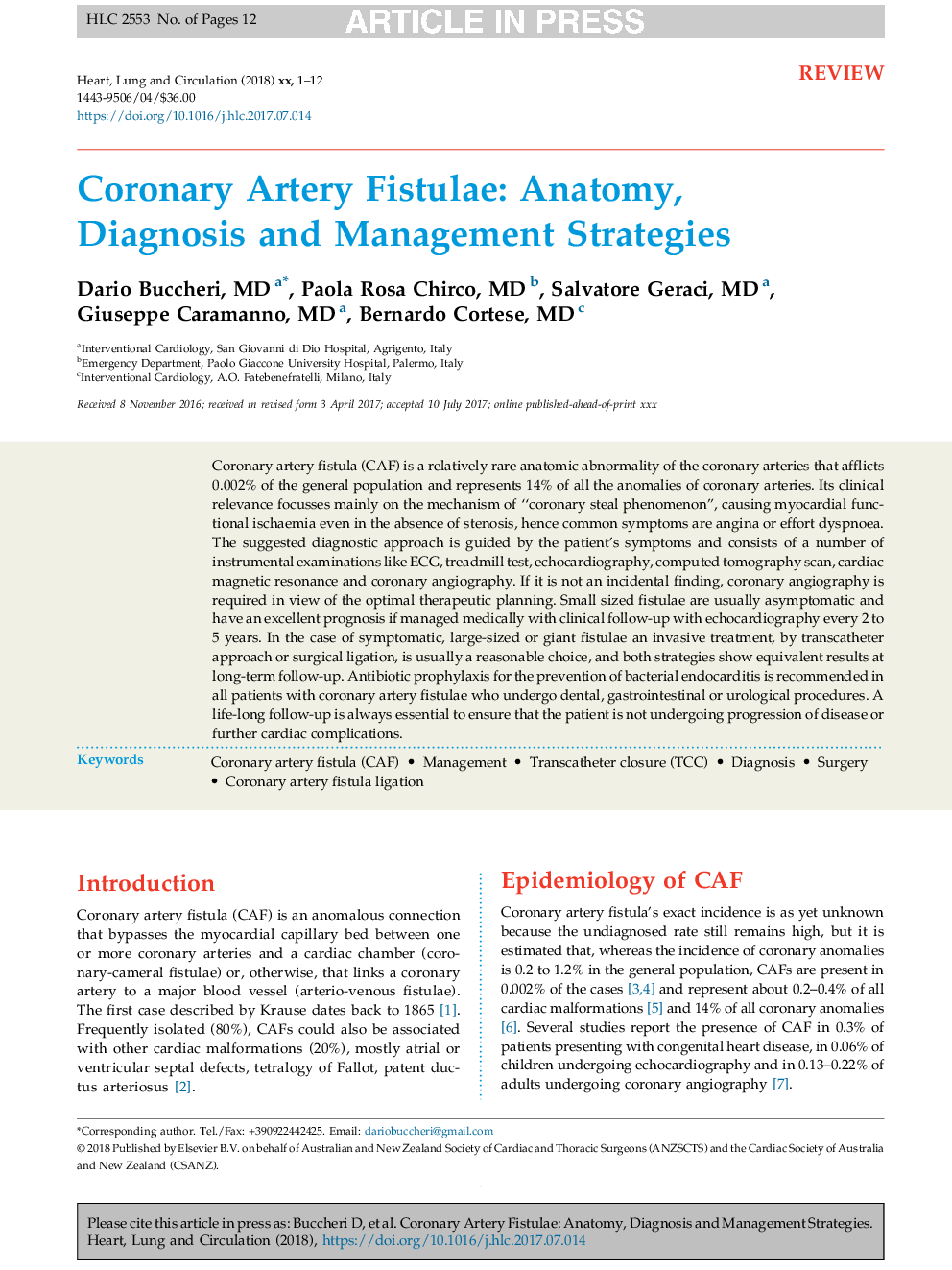| Article ID | Journal | Published Year | Pages | File Type |
|---|---|---|---|---|
| 8659672 | Heart, Lung and Circulation | 2018 | 12 Pages |
Abstract
Coronary artery fistula (CAF) is a relatively rare anatomic abnormality of the coronary arteries that afflicts 0.002% of the general population and represents 14% of all the anomalies of coronary arteries. Its clinical relevance focusses mainly on the mechanism of “coronary steal phenomenon”, causing myocardial functional ischaemia even in the absence of stenosis, hence common symptoms are angina or effort dyspnoea. The suggested diagnostic approach is guided by the patient's symptoms and consists of a number of instrumental examinations like ECG, treadmill test, echocardiography, computed tomography scan, cardiac magnetic resonance and coronary angiography. If it is not an incidental finding, coronary angiography is required in view of the optimal therapeutic planning. Small-sized fistulae are usually asymptomatic and have an excellent prognosis if managed medically with clinical follow-up with echocardiography every 2 to 5 years. In the case of symptomatic, large-sized or giant fistulae an invasive treatment, by transcatheter approach or surgical ligation, is usually a reasonable choice, and both strategies show equivalent results at long-term follow-up. Antibiotic prophylaxis for the prevention of bacterial endocarditis is recommended in all patients with coronary artery fistulae who undergo dental, gastrointestinal or urological procedures. A life-long follow-up is always essential to ensure that the patient is not undergoing progression of disease or further cardiac complications.
Keywords
Related Topics
Health Sciences
Medicine and Dentistry
Cardiology and Cardiovascular Medicine
Authors
Dario MD, Paola Rosa MD, Salvatore MD, Giuseppe MD, Bernardo MD,
